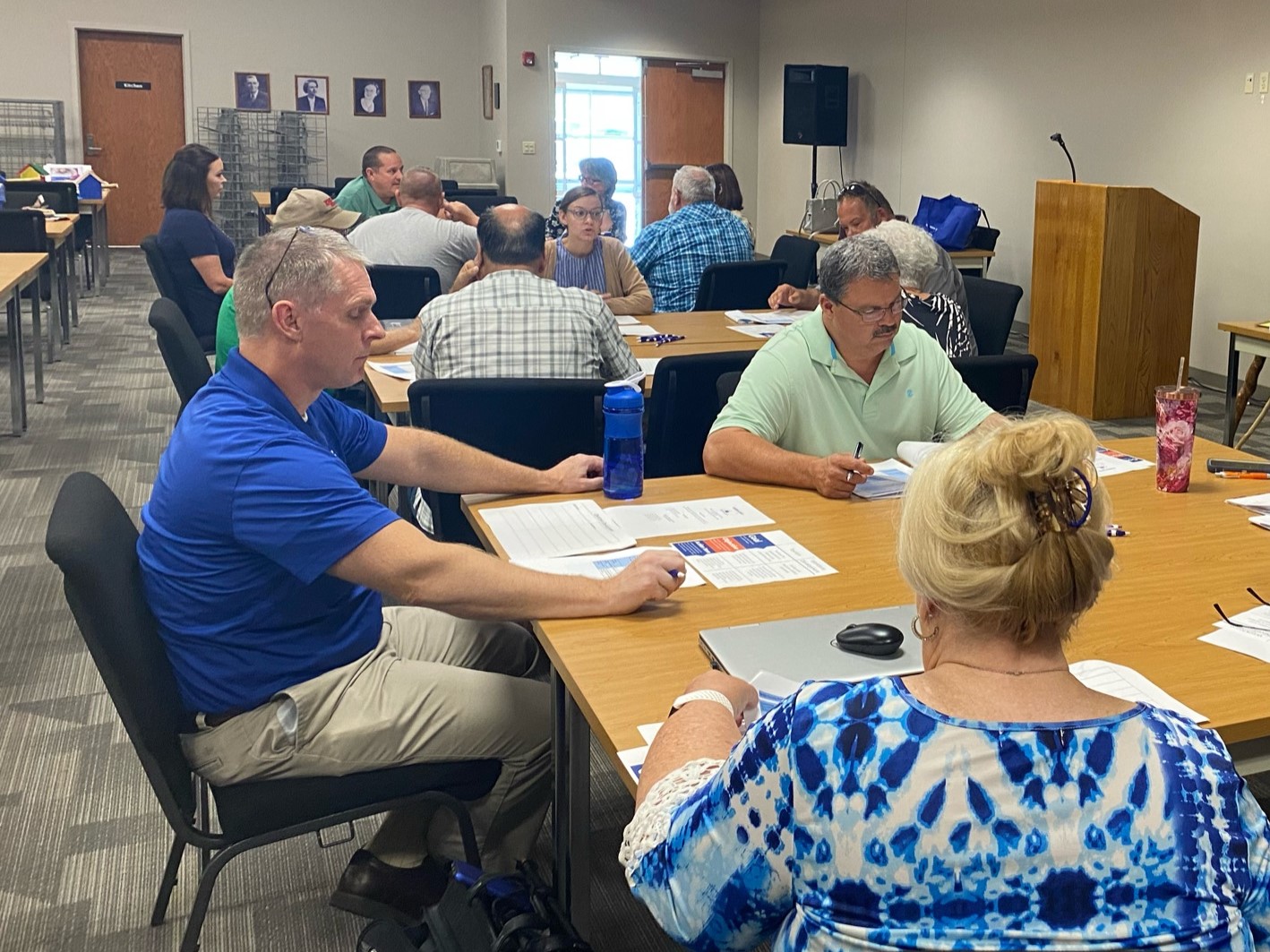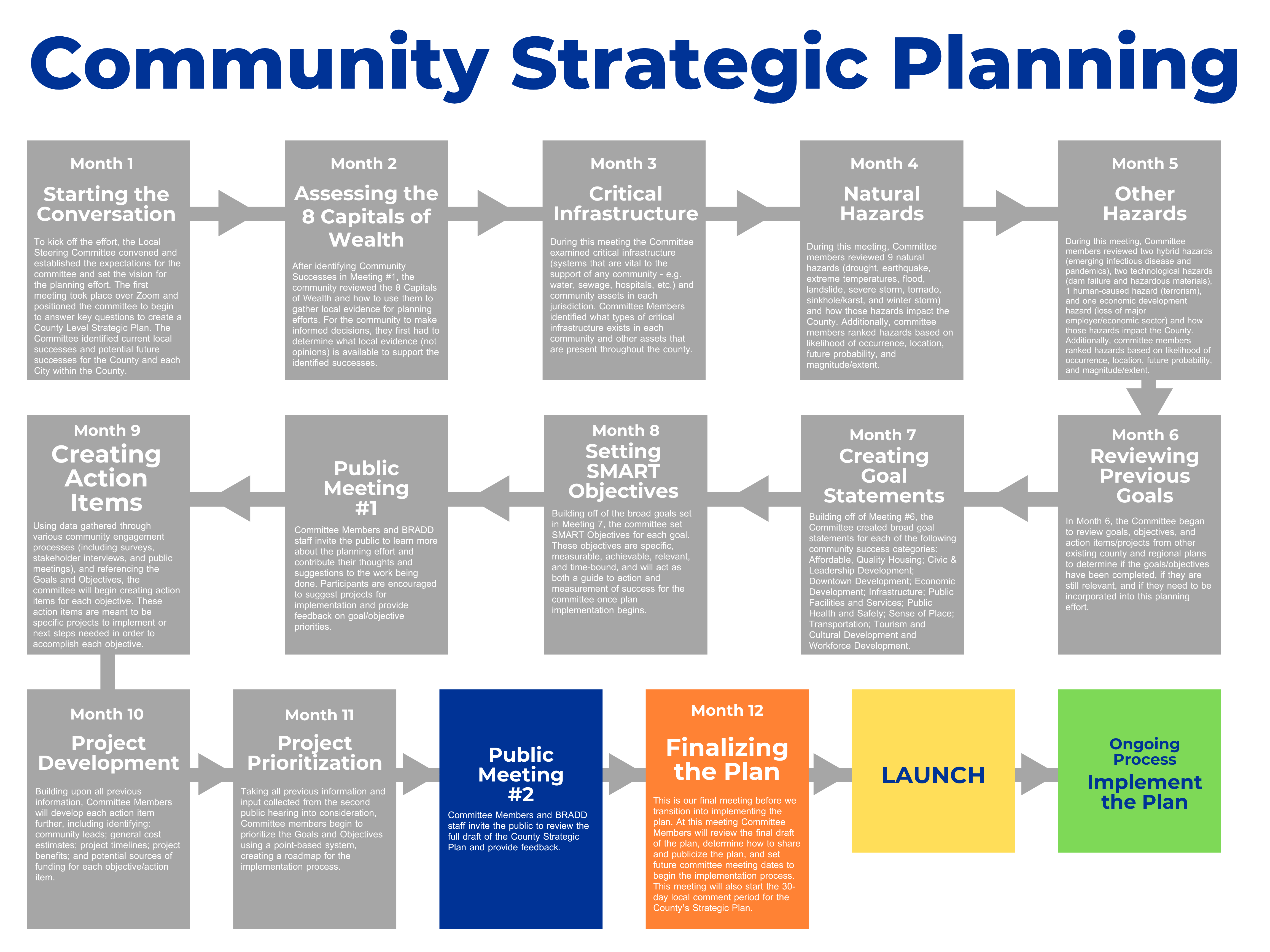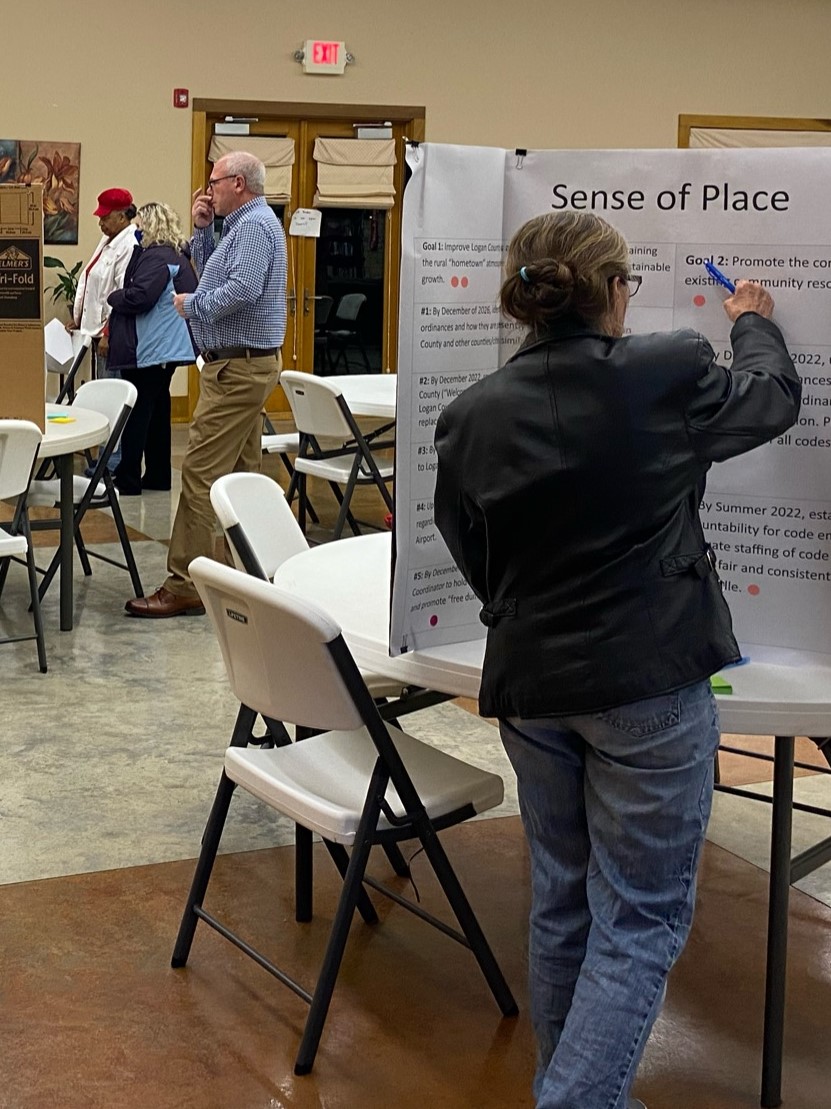Planning is one of the things we do best
As a federally recognized Economic Development District, the Barren River Area Development District (BRADD) is tasked with maintaining the region’s 5-year Comprehensive Economic Development Strategy (CEDS). For the 2022-2027 CEDS, BRADD took a more holistic and grassroots approach, working through county-level steering committees to craft county strategic plans that could then roll up in to the regional plan. An overview of this process is below.
Local Level Collaborative Planning
In early 2021, BRADD worked with each County Judge-Executive in the 10-county region to form a local steering committee with representatives from the county, each incorporated city within the county, school districts, healthcare professionals, and other interested stakeholders. These Steering Committees met monthly from January 2021 to April 2022 to craft county-level strategic plans.
Strategy-driven Goals/Objectives
As County Steering Committees worked their way through the planning process, they used data and statistical information paired against previous planning efforts to craft goals and objectives across 11 common categories. This allows BRADD to track themes in goals/objectives and help each community identify clear and actionable next steps for implementation.
Regional Approaches
Once Steering Committees finalized and adopted their county-level strategic plans, BRADD was able to take common goals and objectives and roll those up into two regional plans: the Comprehensive Economic Development Strategy and the Regional Multi-Hazard Multi-Jurisdiction Mitigation Plan to provide regional guidance and approaches for tackling common issues.

A Holistic Approach
For the 2022-2027 CEDS, BRADD took a more holistic approach to planning and asked each county to examine both current data/statistical information and any and all existing efforts; evaluate those efforts to ensure they are still relevant to each community’s underlying goals; decide if each goal needs to be kept in-place, reworked, or scrapped and a new goal written; and create clear next-steps for implementing any goals kept/created.
A Living Plan
Another key change in BRADD’s 2022-2027 CEDS was the switch to a digital platform for both the county strategic plans and the regional comprehensive plans. This switch to digital allows each aspect of the plans to be flexible in ways not previously achievable. Data and progress check-ins are now able to be displayed and edited live as communities complete objectives, reach goals, and pivot to face new opportunities. As you explore this website, you will find the most up-to-date information relevant to each planning effort (county and regional).
A Never-Ending Process
Now that each of our 10-counties have completed the process of writing their Strategic Plans, Steering Committees continue to meet quarterly to check-in on goals and objectives, make adjustments as needed, and report back on progress. You can find the latest information on where each community is currently with regard to their plan by reviewing the County Plans pages of this website.
The Planning Process
Looking at local and regional issues together.
Taking a Grassroots Approach to Multi-County Planning.
A more detailed overview of the grass-roots approach each county went through in creating their county-level strategic plans (and ultimately shaping the CEDS) is presented below. You can also click on each month’s icon to learn even more about the information covered during that session.


The Process At-A-Glance
To kick off the planning effort, Local Steering Committees convened and established the expectations / set the vision for the planning effort. Through an interactive Zoom session, the committee to begin identify current local successes and potential future successes for the County and each City within the County.
After identifying Community Successes in Meeting #1, each Steering Committee reviewed the 8 Capitals of Wealth and how to use them to gather local evidence for planning efforts. This included a review of current demographic and statistical data relating to each community.
Steering Committees then examined critical infrastructure (systems vital to the support of any community – e.g. water, hospitals, etc.) & community assets in each jurisdiction. This included making an inventory of existing critical infrastructure and identifying gaps in infrastructure.
In Month 4, Steering Committees reviewed nine natural hazards (drought, earthquake, extreme temperatures, flood, landslide, severe storm, tornado, sinkhole/karst, and winter storm) and assessed how those hazards impact the community.
In Month 5, Steering Committee Members reviewed other, non-natural hazards (emerging infectious disease, pandemics, dam failure, hazardous materials, terrorism, & loss of major employer/economic sector) and how those hazards impact the County.
In Month 6, the Committee began to review goals, objectives, and action items/projects from other existing county and regional plans to determine if the goals/objectives have been completed, if they are still relevant, and if they need to be incorporated into this planning effort.
Next, Steering Committees crafted goal statements for 11 categories: Affordable, Quality Housing; Civic & Leadership Development; Downtown Development; Economic Development; Infrastructure; Public Facilities & Services; Public Health & Safety; Sense of Place; Transportation; Tourism & Cultural Development; and Workforce Development.
After setting goals in Meeting 7, Steering Committees then crafted SMART Objectives for each goal. These objectives are Specific, Measurable, Achievable, Relevant, and Time-bound; and will act as both a guide to action and measurement of success for the committee once plan implementation begins.
Setting SMART Objectives
Using data gathered through various community engagement processes, and referencing the Goals and Objectives, each Steering Committee began creating action items from their objectives. These action items are specific projects to implement, or next steps needed, in order to accomplish community goals.
Building upon all previous information, Steering Committee Members developed each action item further, including identifying: community leads, general cost estimates, project timelines, project benefits, and potential sources of funding for each objective/action item.
Taking all previous information and input collected from the second public hearing into consideration, Committee members prioritized the Goals and Objectives using a point-based system, creating a roadmap for the implementation process.
At this final meeting before implementation, Steering Committees reviewed the final drafts of their plans, determined how to share and publicize the plans, and set future committee meeting dates to begin the implementation process. This meeting also started the 30-day local comment period for the County’s Strategic Plan.